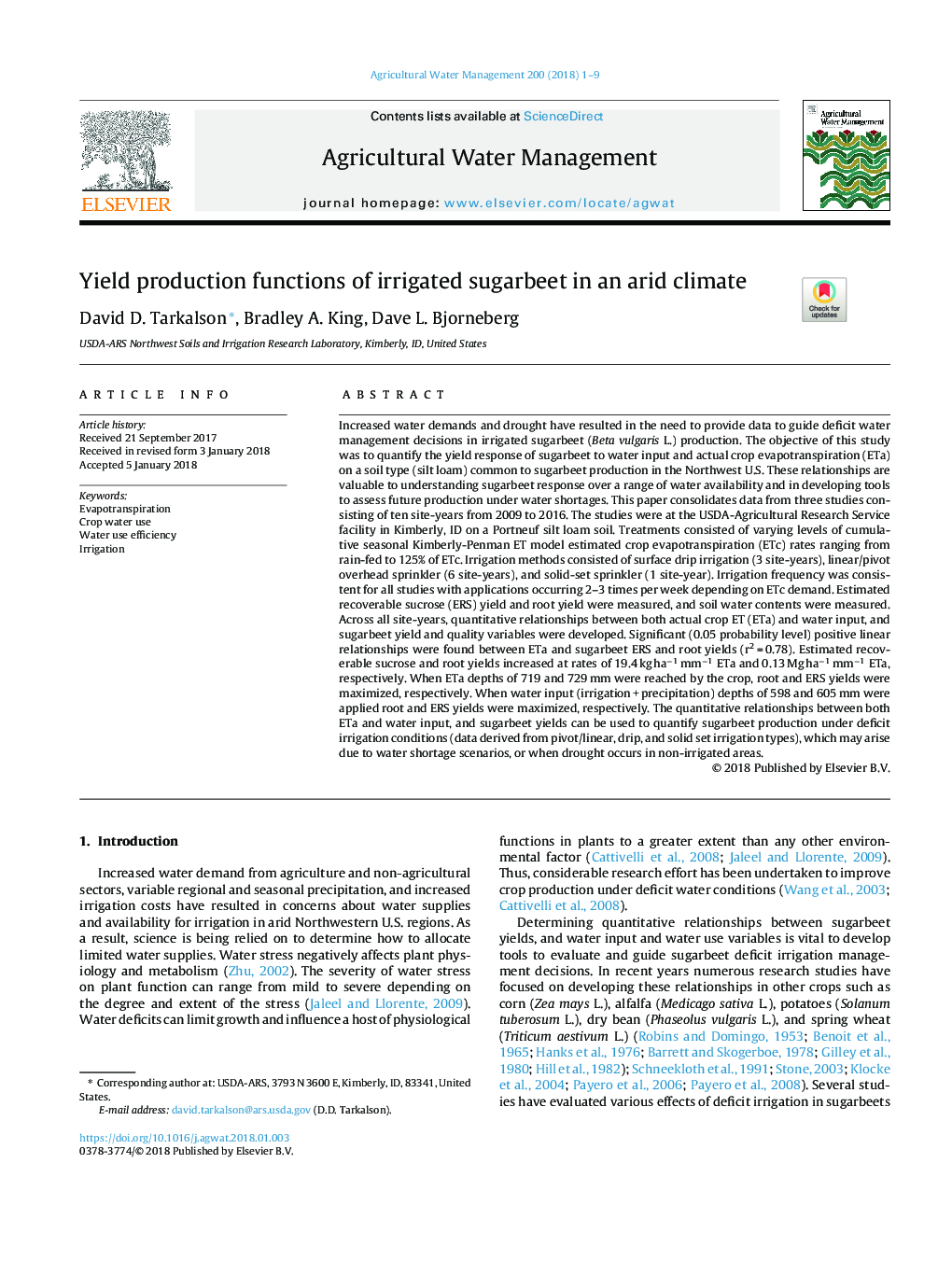| Article ID | Journal | Published Year | Pages | File Type |
|---|---|---|---|---|
| 8873105 | Agricultural Water Management | 2018 | 9 Pages |
Abstract
Increased water demands and drought have resulted in the need to provide data to guide deficit water management decisions in irrigated sugarbeet (Beta vulgaris L.) production. The objective of this study was to quantify the yield response of sugarbeet to water input and actual crop evapotranspiration (ETa) on a soil type (silt loam) common to sugarbeet production in the Northwest U.S. These relationships are valuable to understanding sugarbeet response over a range of water availability and in developing tools to assess future production under water shortages. This paper consolidates data from three studies consisting of ten site-years from 2009 to 2016. The studies were at the USDA-Agricultural Research Service facility in Kimberly, ID on a Portneuf silt loam soil. Treatments consisted of varying levels of cumulative seasonal Kimberly-Penman ET model estimated crop evapotranspiration (ETc) rates ranging from rain-fed to 125% of ETc. Irrigation methods consisted of surface drip irrigation (3 site-years), linear/pivot overhead sprinkler (6 site-years), and solid-set sprinkler (1 site-year). Irrigation frequency was consistent for all studies with applications occurring 2-3 times per week depending on ETc demand. Estimated recoverable sucrose (ERS) yield and root yield were measured, and soil water contents were measured. Across all site-years, quantitative relationships between both actual crop ET (ETa) and water input, and sugarbeet yield and quality variables were developed. Significant (0.05 probability level) positive linear relationships were found between ETa and sugarbeet ERS and root yields (r2â¯=â¯0.78). Estimated recoverable sucrose and root yields increased at rates of 19.4â¯kgâ¯haâ1â¯mmâ1 ETa and 0.13â¯Mgâ¯haâ1â¯mmâ1 ETa, respectively. When ETa depths of 719 and 729â¯mm were reached by the crop, root and ERS yields were maximized, respectively. When water input (irrigationâ¯+â¯precipitation) depths of 598 and 605â¯mm were applied root and ERS yields were maximized, respectively. The quantitative relationships between both ETa and water input, and sugarbeet yields can be used to quantify sugarbeet production under deficit irrigation conditions (data derived from pivot/linear, drip, and solid set irrigation types), which may arise due to water shortage scenarios, or when drought occurs in non-irrigated areas.
Related Topics
Life Sciences
Agricultural and Biological Sciences
Agronomy and Crop Science
Authors
David D. Tarkalson, Bradley A. King, Dave L. Bjorneberg,
